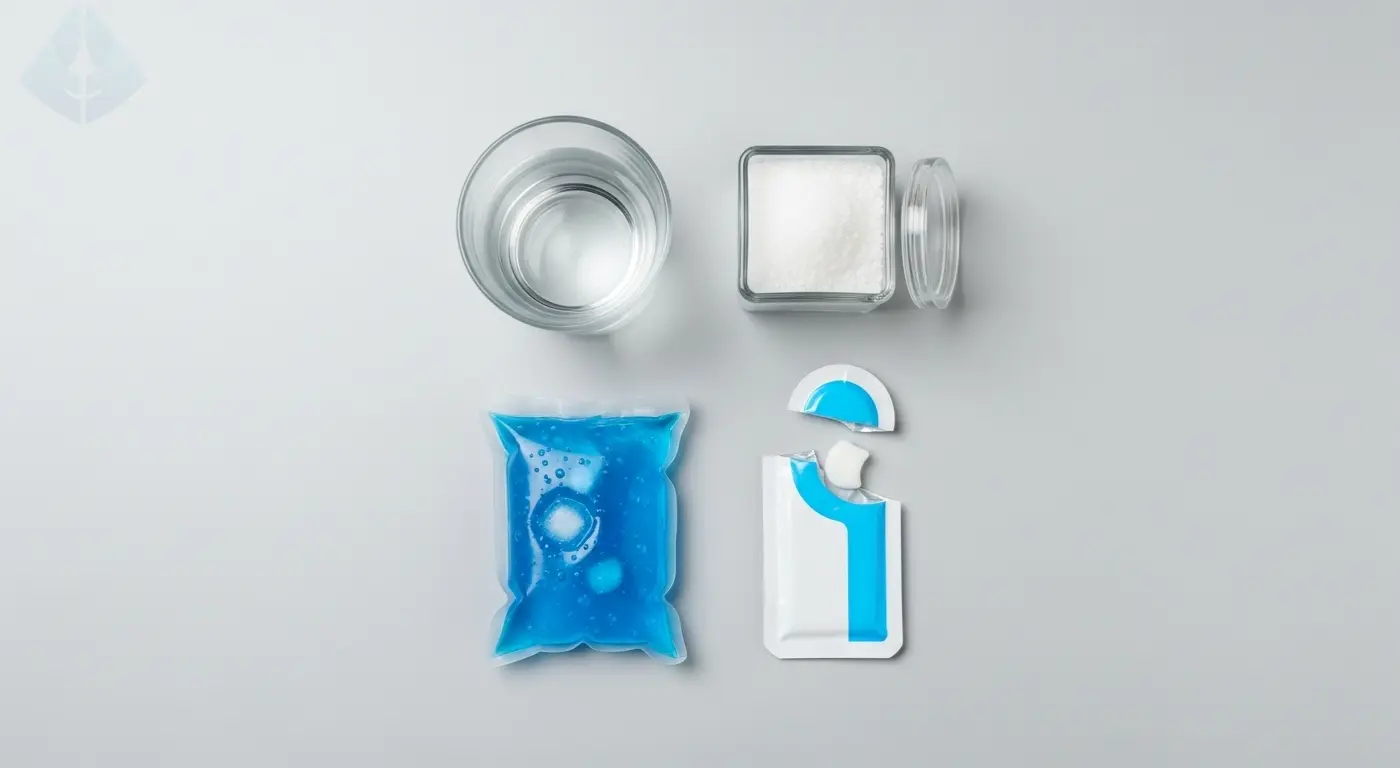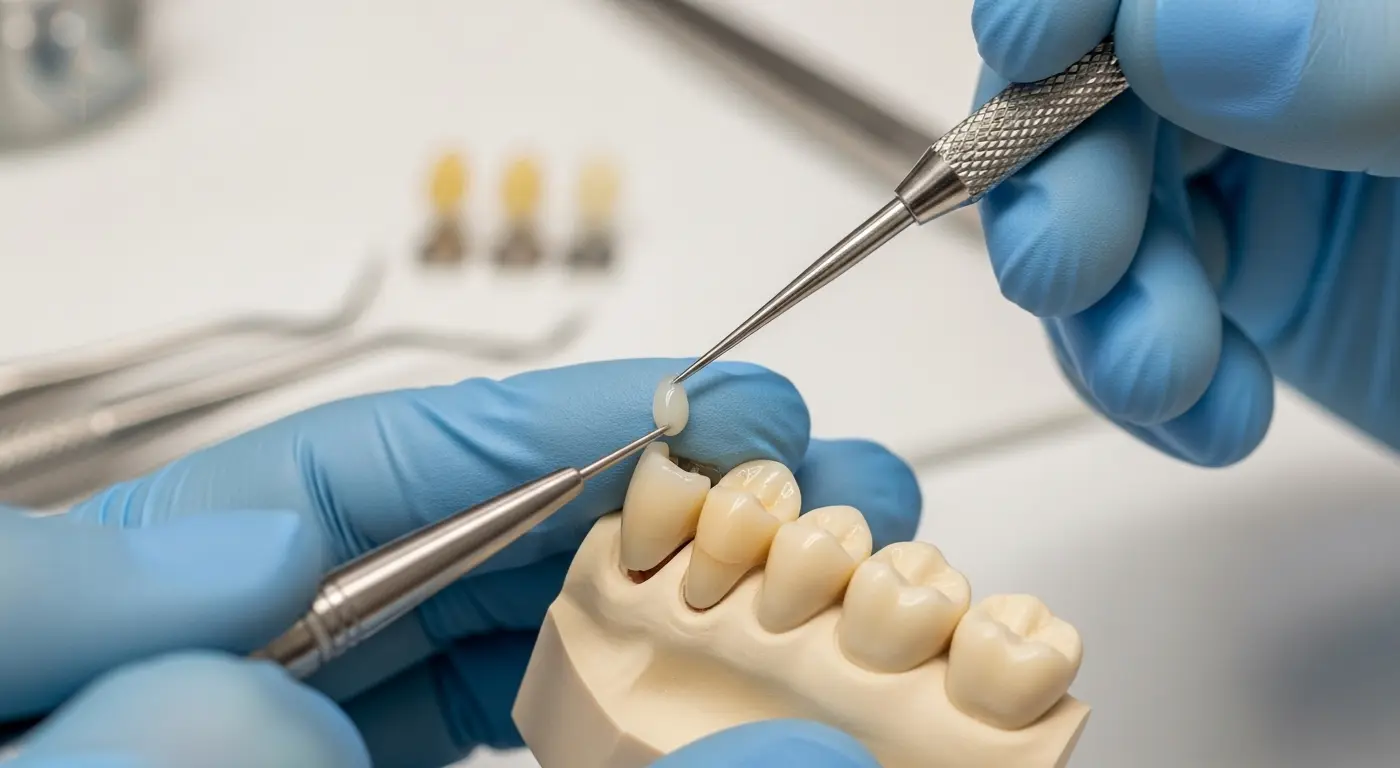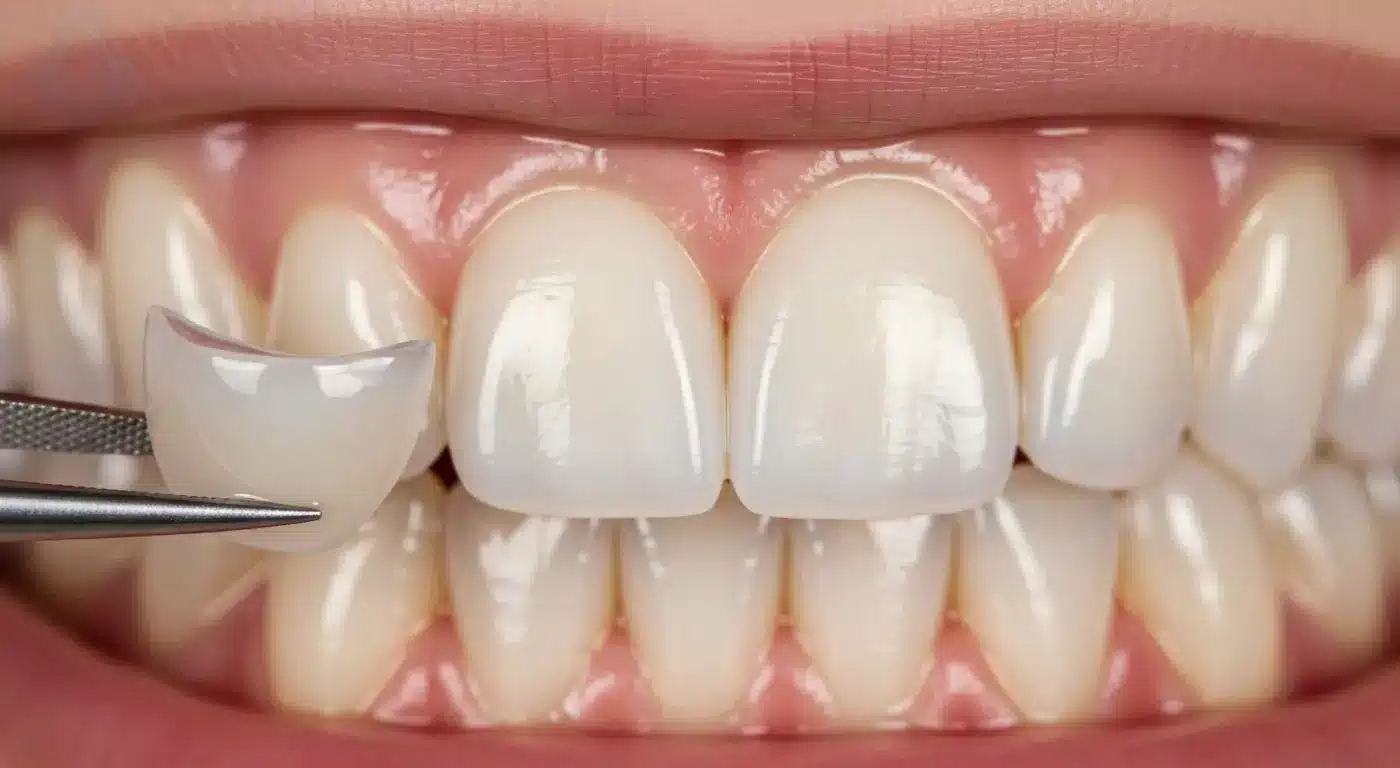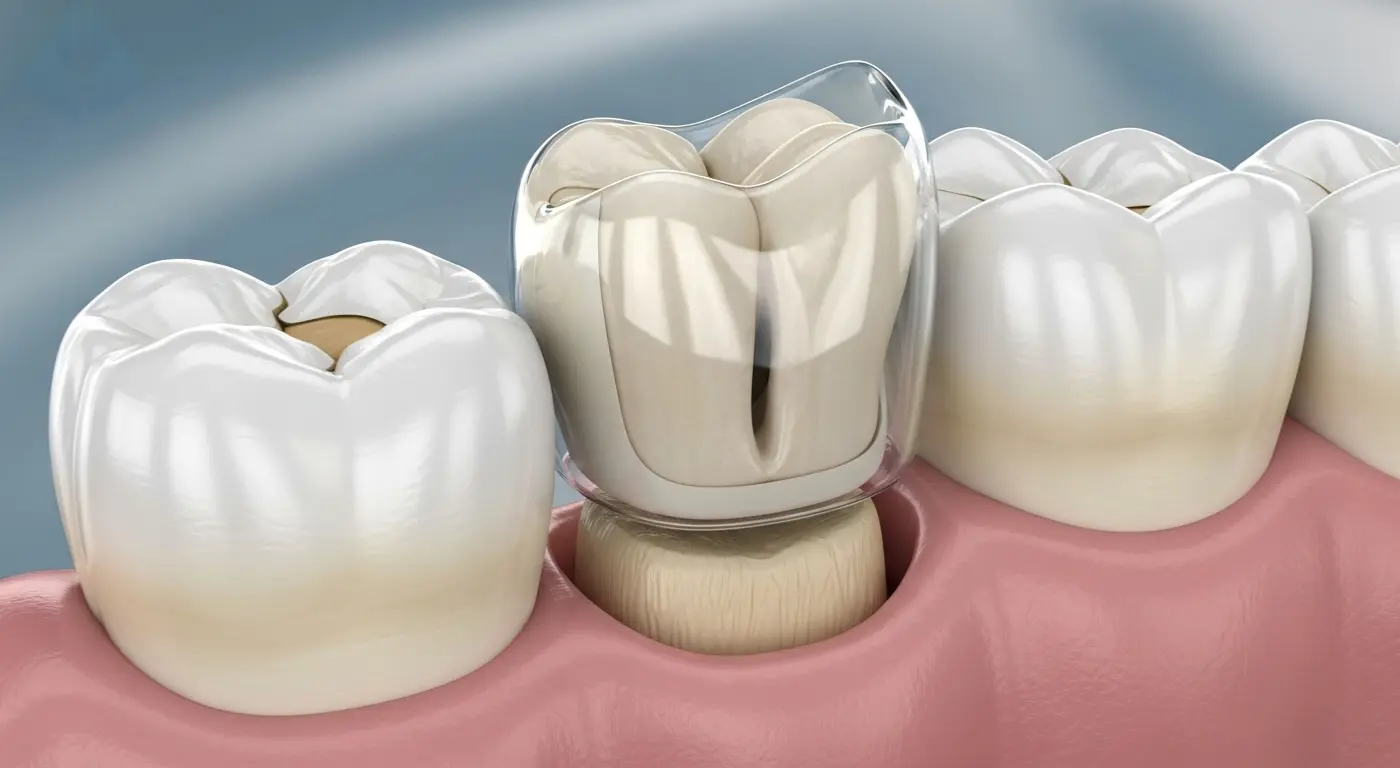It’s a moment that can happen to anyone: you’re enjoying a meal, playing a sport, or you simply bite down wrong, and suddenly you feel a rough, sharp edge on one of your teeth. A chipped tooth can be alarming, affecting not just your smile but also your comfort. The good news is that fixing a chipped tooth is a routine and highly successful procedure in modern cosmetic dentistry.
Whether it’s a tiny chip on a molar or a more noticeable fracture on a front tooth, ignoring it is never the best option. This comprehensive guide will walk you through everything you need to know, from immediate first aid to the advanced professional solutions that can restore your tooth to its natural, beautiful state. Don’t let a chip in your smile chip away at your confidence.
What to Do Immediately After Chipping a Tooth
Before you even think about the long-term solution for fixing a chipped tooth, your immediate actions can make a significant difference in preventing further damage or discomfort. If you’ve just chipped a tooth, follow these essential first-aid steps:
Rinse Your Mouth: Gently rinse your mouth with warm salt water. This will help clean the area and reduce the risk of infection.
Save the Piece (If Possible): If you can find the broken piece of your tooth, save it in a small container with milk or your saliva. In some rare cases, your dentist might be able to reattach it.
Manage Pain and Swelling: If you’re experiencing pain, an over-the-counter pain reliever can help. Apply a cold compress or ice pack to the outside of your cheek or lip to minimize swelling.
Protect Your Mouth: A chipped tooth can leave a sharp or jagged edge that can cut your tongue, cheek, or lips. You can temporarily cover it with a piece of sugar-free gum or over-the-counter dental wax.
Call Your Dentist Immediately: This is the most crucial step. Explain what happened and schedule an appointment as soon as possible. Even a small chip can have underlying damage that only a professional can assess.
Why You Shouldn’t Ignore a Chipped Tooth
It can be tempting to dismiss a minor chip, especially if it doesn’t cause pain. However, even small imperfections can lead to bigger problems down the road. Ultimately, seeking professional advice is the safest course of action.
Ignoring the problem can lead to:
Increased Risk of Decay: The damaged enamel can expose the inner layers of your tooth, making it more vulnerable to bacteria and cavities.
Further Damage: A chipped tooth is structurally weaker. Normal chewing can cause the chip to worsen or lead to a more significant crack or fracture.
Nerve Damage: If the chip is deep enough, it can expose the nerve-rich pulp inside your tooth, leading to intense pain, sensitivity, and potential infection requiring a root canal.
Aesthetic Concerns: A visible chip, particularly on a front tooth, can make you self-conscious about your smile, affecting your personal and professional interactions.
Your Professional Options for Fixing a Chipped Tooth
Fortunately, cosmetic dentistry offers several excellent solutions for chipped tooth repair. The best option for you will depend on the size and location of the chip, your budget, and your aesthetic goals. Your dentist will recommend the most suitable treatment after a thorough examination.
Dental Bonding: The Quick and Artistic Fix
Dental bonding is one of the most common and affordable methods for fixing a chipped tooth, especially for small, cosmetic chips on front teeth.
What it is: The procedure uses a tooth-colored composite resin—a durable, putty-like material—which is skillfully sculpted onto the tooth to fill in the chip.
The Process: Your dentist will first lightly etch the tooth’s surface to help the resin adhere. They then apply the resin, mold it to the desired shape, and harden it using a special curing light. Finally, the bonded tooth is polished to match the sheen of your natural teeth. The entire process is typically completed in a single, painless visit.
Best For: Minor cosmetic chips, closing small gaps, and improving the shape of a tooth.
Porcelain Veneers: The Flawless Smile Makeover
If the chip is more significant, or if you’re looking to transform your smile’s overall appearance, a porcelain veneer might be the ideal solution.
What it is: A veneer is a very thin, custom-made shell of dental porcelain that is bonded to the front surface of a tooth. It’s designed to cover imperfections and create a flawless, natural-looking appearance.
The Process: This treatment usually requires two visits. During the first visit, a tiny amount of enamel is removed from the tooth surface to make room for the veneer. An impression is taken and sent to a dental lab where your custom veneer is crafted. On the second visit, the veneer is permanently bonded to your tooth.
Best For: Moderate chips on front teeth, teeth that are also discolored or misshapen, and achieving a complete “smile makeover.”
Dental Crowns: The Ultimate Protection for Damaged Teeth
For a large chip or a tooth that has sustained significant structural damage, a dental crown is often the recommended treatment.
What it is: A dental crown, or “cap,” is a custom-fitted restoration that covers the entire tooth, from the gum line up. It restores the tooth’s original shape, size, strength, and appearance.
The Process: Similar to a veneer, this process typically involves two appointments. The tooth is reshaped to accommodate the crown, an impression is taken, and a temporary crown is placed. Once your permanent crown is ready, you’ll return to have it cemented securely in place.
Best For: Large chips, cracked or fractured teeth, teeth with extensive decay, and molars that require robust chewing strength.
Choosing the Right Chipped Tooth Repair
To help you understand the differences at a glance, here’s a comparison of the most common solutions for <u>fixing a chipped tooth</u>:
| Feature | Dental Bonding | Porcelain Veneer | Dental Crown |
| Best For | Small, cosmetic chips on front teeth | Moderate chips, discoloration, shape issues | Large chips, cracked teeth, molars |
| Durability | Good (5-10 years) | Excellent (10-20+ years) | Excellent (15-25+ years) |
| Procedure Time | 1 Visit (30-60 mins) | 2 Visits | 2 Visits |
| Invasiveness | Minimally invasive | Minimally invasive (some enamel removal) | More invasive (tooth is reshaped) |
| Aesthetics | Very good, can stain over time | Excellent, highly stain-resistant | Excellent, indistinguishable from natural teeth |
| Cost | $ (Most Affordable) | $$$(Higher Investment) | $$ (Moderate to High) |
What is the Cost of Fixing a Chipped Tooth?
The cost of treatment can vary significantly based on several factors:
The extent of the damage: A tiny chip fixed with bonding will cost far less than a large fracture requiring a crown.
The material used: Composite resin for bonding is less expensive than high-quality dental porcelain for veneers or crowns.
Your location and dentist’s expertise: Costs can vary by geographic area and the experience of the cosmetic dentist.
It’s important to have a consultation to get an accurate quote. Many dental offices also offer financing plans to make treatment more affordable. Remember, fixing a chipped tooth is an investment in your oral health and confidence.
How to Prevent Chipped Teeth in the Future
While accidents happen, you can take several precautions to minimize your risk of chipping your teeth:
Avoid Chewing Hard Objects: Don’t chew on ice, hard candy, pens, or popcorn kernels.
Wear a Mouthguard: If you play contact sports, a custom-fitted mouthguard is essential protection.
Address Teeth Grinding (Bruxism): If you grind your teeth at night, ask your dentist about a custom nightguard to protect your teeth from wear and fractures.
Maintain Good Oral Hygiene: Strong, healthy teeth are more resistant to chipping. Brush twice a day, floss daily, and see your dentist for regular checkups.
Ready to Unveil Your Flawless Smile?
A chipped tooth doesn’t have to be a permanent flaw in your smile. With today’s advanced cosmetic dentistry, fixing a chipped tooth is easier, faster, and more effective than ever before. From simple bonding to transformative veneers, there is a perfect solution waiting for you.
The most important step is to seek professional care. An expert cosmetic dentist can assess the damage, discuss your options, and create a personalized treatment plan to restore not only the function and health of your tooth but also the beauty and confidence of your smile.
Don’t wait for a small chip to become a big problem. Schedule a consultation with our dental experts today and take the first step toward a whole, healthy, and beautiful smile once again.












